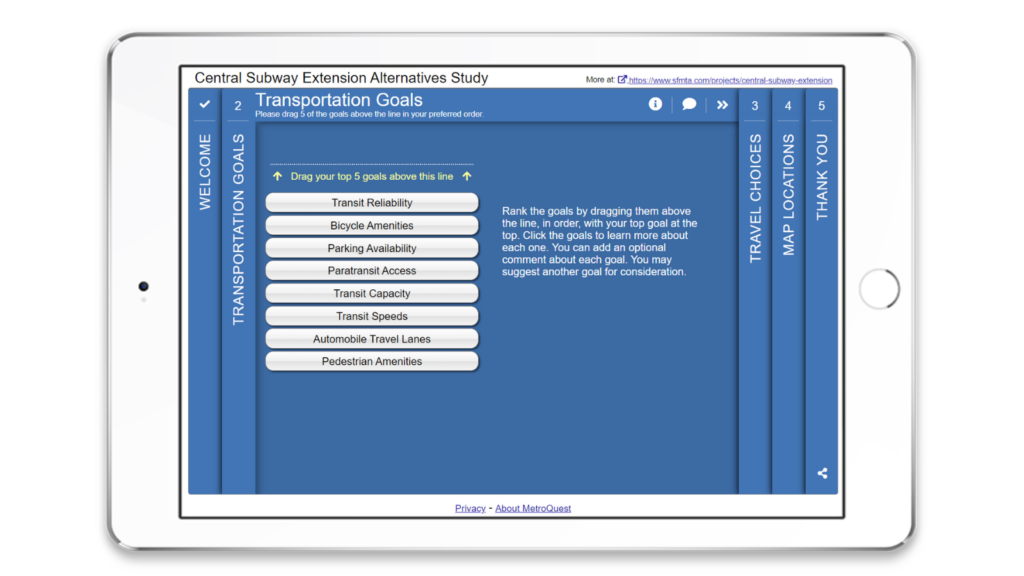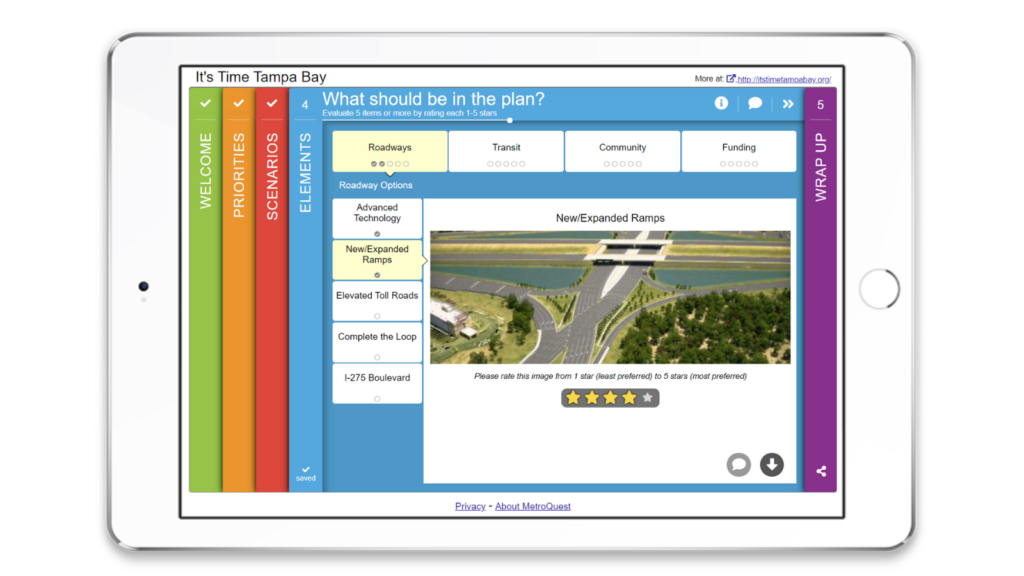21 Tips to Answer Common Questions Around Online Public Engagement
![[TIPS] 21 Tips to Overcome Online Public Engagement Pushback [TIPS] 21 Tips to Overcome Online Public Engagement Pushback](https://metroquest.com/wp-content/uploads/TIPS-21-Tips-to-Overcome-Online-Public-Engagement-Pushback.png)
This blog was originally published on November 19, 2014.
Whether or not your community is familiar with public engagement, improving the overall experience of filling out an online survey or taking part in a public meeting can make it easier for community members to take part, and help establish a culture of trust.
We’ve identified five questions that participants often ask practitioners and 21 corresponding tips to help you can use to help enhance the public’s online experience and your public engagement results! Let’s get started…
Question 1: “How long will this take?”
In the digital age, attention spans are shorter and there’s more and more taking up our time. Aim to keep the online engagement process short for participants.
- Tip #1: Get people started in 10 seconds or less. Avoid complicated instructions or registration pages where participants must create an account in order to participate. If you’re using something like Zoom for online public meetings, send out links with the password embedded!
- Tip #2: For surveys, target a five-minute experience. Something that takes people only a few minutes to complete not only increases your completions rates but your public engagement numbers as well.
- Tip #3: Show people what’s at stake and how their input will be used.
- Tip #4: Start with the right question. At MetroQuest, we’ve found that asking people to identify their priorities is one of the most engaging ways to start. Check out one of our priority ranking screens to see for yourself how you can do that in a survey!
- Tip #5: Start engaging early on in the planning process. People want to weigh in before decisions have been made.
- Tip #6: When collecting input, create a sense of urgency. Let people know that there is a limited time for them to provide their input.
Question 2: “What’s in it for me?”
People are self-interested. Your calls-to-action, branding and content must draw people in.
- Tip #7: Test out different calls-to-action. Different demographic groups will respond to different messaging. The different channels you use can have an impact as well.
- Tip #8: Make the online engagement experience fun for participants to help ensure they have a positive engagement experience.
- Tip #9: Connect with people emotionally. Stories and images are more powerful than words and statistics.
- Tip #10: When asking participants to identify priorities, highlight the pros and cons of each and help them link it back to their own experiences.
- Tip #11: Give people input opportunities that matter to them and their community. Think about what kind of input people might want to get off their chest and give them a safe and accessible way to share it.
- Tip #12: Understand sharing on social networks. Develop visuals, messaging and an experience that people will be proud to promote, and that others will like, leave comments on, or share.
Question 3: “Am I comfortable with this?”
When providing input, individuals may feel intimidated or reluctant to share their real thoughts. Try to make the online engagement experience safe and comfortable for participants.
- Tip #13: Ensure that your questions are clear so that participants understand exactly what’s being asked of them. Use simple language, avoid jargon and make sure that the process to provide input is straightforward and simple.
- Tip #14: Use images whenever possible to make the engagement experience more visually interesting and engaging.
- Tip #15: Don’t allow for grandstanding or bullying. People are more likely to share their true views and opinions if they feel safe and know their ideas won’t be challenges or ridiculed online.
Question 4: “Can you help me with this?”
Planning issues can be intimidating, and many people don’t feel qualified to register an opinion. It’s important to help people learn in a way that doesn’t turn them off.
- Tip #16: Ask questions that people feel qualified to answer. Everyone knows what they like and dislike and what priorities are most important to them in their community.
- Tip #17: Allow people to discover insights for themselves by embedding learning in the experience. For example, a budget allocation exercise can help inform participants that funding for the project is limited.
- Tip #18: Educate before asking for opinions to ensure the public is well-informed about the project. By providing context, you help to ensure that participants provide you with educated input and knowledgeable answers to the questions being asked.
Question 5: “I’m in a rush. Do I really need to finish this?”
For people in a rush, i.e., 95% of participants, it’s important to work hard to get them to finish a survey and answer as many questions as they can.
- Tip #19: Leverage people’s curiosity and sense of accomplishment. Share graphics of survey results, and show the community how their input was used.
- Tip #20: Ask for personal information at the end, rather than at the beginning. People are much more willing to provide this information at the end of the engagement experience, when they’re already invested in the project.
- Tip #21: Prizes work! Offer something of value, such as a chance to win a tablet or gift card, to encourage more people to participate.
Over to you. What insights do you have that could help improve online engagement?

